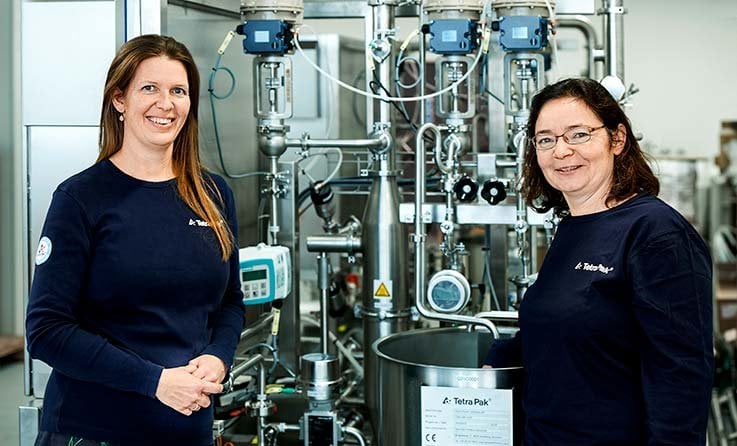www.ptreview.co.uk
30
'20
Written on Modified on
Optimizing fractionation of milk proteins
Separating milk proteins in pure fractions containing casein and whey protein respectively is a dream scenario. It enables production of commercially interesting products but is also a technically challenging task to fulfill. Based on our research, Tetra Pak can optimize plant performance targeted towards the individual costumer desire – and provide dairies with total plant solutions that are very cost effective and with high purity of retentate and permeate.

Fractionation of skim milk is synonymous with microfiltration, and for this task both ceramic and polymeric membranes can be used. There is a significant price difference between the two types with ceramic membranes being more expensive. Research shows that ceramic membranes are superior in respect of passing whey proteins through the membrane and retaining casein compared to polymeric membranes. Therefore, both membranes have benefits and are useful depending on which requirements are of primary importance.
Common for both ceramic and polymeric membranes is that there is a pore size distribution rather than a defined cut-off value, which would be the optimal design for separating proteins. The pore size distribution may be of variable width, and therefore performance of the membranes is often interlinked with building of a secondary fouling layer.
Membrane performance tests
Tetra Pak has completed a range of tests investigating membrane performance at different processing conditions and thereby different fouling layer compositions. Combining performance of membranes from various suppliers with building of a secondary fouling layer is crucial as it will define the final performance.
Trials have shown that good performance of a polymeric membrane filtration plant can be obtained by different processing conditions depending on the membrane used. A relatively open membrane could be used together with a dense fouling layer created from low baseline and low crossflow pressure resulting in high flux, low retention of whey proteins, and high retention of casein.
Another membrane with a smaller and more narrow pore size distribution could be combined with low baseline and high crossflow pressure, reducing the secondary fouling layer making the fractionation process rely on the membrane properties themselves rather than the fouling layer.
Another well-documented aspect is temperature during filtration. -casein will partly solubilize from the casein micelle when stored cold and follow whey proteins through the membrane. Polymeric membranes are often operated at cold conditions enabling a long production time, but unfortunately also a high transmission of -casein. This could be overcome by increasing temperature and thus minimizing the performance difference between polymeric and ceramic filtration plants.
Pretreatment of milk often neglected
Milk is assumed to be fresh and undisturbed when arriving to the plant, but it can have been traded between dairies resulting in multiple pasteurization processes. This will result in partly damaged whey proteins that are difficult or impossible to pass through the membrane, initiating a range of undesired effects such as decreased whey protein yield, buildup of protein in retentate, and/or decreased flux; all resulting in decreased plant capacity.
Another pretreatment is ultrafiltration/reverse osmosis concentration of milk for transportation purposes or for optimizing design of the production line. Tetra Pak has found that the possible degree and type of preconcentration will affect the subsequent microfiltration performance in respect of flux and retentions. Therefore, there is an often-unforeseen possibility to optimize a full line design. Focus is often targeted at the individual process – in this case microfiltration, but our work has proved that focus should rather be targeted at fully optimized line solutions to meet requirements needed at each dairy.
www.tetrapak.com

